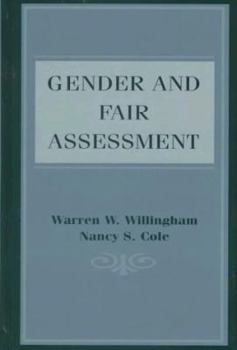Gender and Fair Assessment
Select Format
Select Condition 
Book Overview
There have been many important changes in the participation of women and men in American society over the past quarter-century. Tests play a role in those changes by providing evidence of the diverse achievement and proficiency of women and men. They aid the learning process and reflect inequalities in opportunity to learn and participate. In addition, they provide useful information in considering what alternatives in education and work make most sense for individuals and influence views about groups of students, educational programs, and a wide range of issues. For all of these reasons, it is important that tests assess fairly and reflect accurately the ways young people are and are not achieving as well as desired.
The test performance of women and men is a research topic of historical interest and has received much attention in recent years. Because of this increased interest, there is a great deal of new research and data available. The purpose of the study presented in this volume was to review this new information with two objectives in mind:*to clarify patterns of gender difference and similarity in test performance and related achievements, and
*to see what implications those findings might have for fair assessment and, as a corollary, examine the assessment process as a possible source of gender differences. This study is interested in tests used in education to assess developed knowledge and skill. In order to gain a broader view of gender similarity and difference, the contributors looked at other types of measures and other characteristics of young women and men. Their hope is to contribute to a firmer basis for insuring fairness in tests--an objective which is particularly important as the field moves increasingly to new forms of assessment in which there is less experience.
Format:Hardcover
Language:English
ISBN:080582331X
ISBN13:9780805823318
Release Date:May 1997
Publisher:Routledge
Length:424 Pages
Weight:1.90 lbs.
Dimensions:1.3" x 6.3" x 9.3"
Customer Reviews
0 rating





